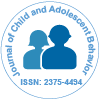Initial Long-Term Findings from a Multimodal Treatment Program for Child Sexual Abuse Victims Demonstrate Reduction of PTSD Frequency and Symptoms
Received Date: May 02, 2016 / Accepted Date: May 30, 2016 / Published Date: Jun 03, 2016
Abstract
It is well recognized that sexually abused children frequently experience long-term negative outcomes including Posttraumatic Stress Disorder (PTSD). To assist victims, a long-term, multimodal approach was developed at the “Be Brave Ranch” (BBR), a treatment facility specifically designed for this program. This paper reports on the initial long-term (1-year) findings from the first 40 children to attend BBR, aged 8-12 (mean age 10.0), of whom 27 were female and 13 were male. While the program remains in progress, here we report here on the results of those who have completed Baseline visits and Assessment #2 at the end of 4-weeks (n=40), those who have completed Assessment #3 at 13-weeks (n=34), those who have completed Assessment #4 at 26-weeks (n=21), and those who have completed Assessment #5, final visit, at 52-weeks (n=14). Of the 40 children who entered the BBR program, two have dropped out, one between Assessment #2 and Assessment #3 and the other between Assessment #3 and Assessment #4. The findings from data collected as part of the standard program demonstrate highly statistically significant reductions in Child Posttraumatic Stress Disorder Symptom Scale (CPSS) scores, which decreased from a mean score at baseline of 20.8 ± 1.4 to a mean of 12.5 ± 2.3 at 52-weeks. There was also a marked reduction in the percentage of children whose scores were above threshold for the diagnosis of PTSD, decreasing from 73% at baseline to 29% at 52-weeks. It should be noted that while much of the reduction in mean CPSS scores occurred in the first 4-weeks, the percentage reduction in those who met criteria for PTSD continued over time. These initial longer-term findings support the utility of this program, but further research is required to determine the potential role of each of the elements of this multimodal program.
Keywords: PTSD; Child; Sexual abuse; CSA; Residential; Therapy; Multimodal; Intensive
Citation: Linder JM, Silverstone PH (2016) Initial Long-Term Findings from a Multimodal Treatment Program for Child Sexual Abuse Victims Demonstrate Reduction of PTSD Frequency and Symptoms. J Child Adolesc Behav 4: 297. Doi: 10.4172/2375-4494.1000297
Copyright: © 2016 Linder JM, et al. This is an open-access article distributed under the terms of the Creative Commons Attribution License, which permits unrestricted use, distribution, and reproduction in any medium, provided the original author and source are credited.
Select your language of interest to view the total content in your interested language
Share This Article
Open Access Journals
Article Tools
Article Usage
- Total views: 12772
- [From(publication date): 6-2016 - Dec 07, 2025]
- Breakdown by view type
- HTML page views: 11663
- PDF downloads: 1109
